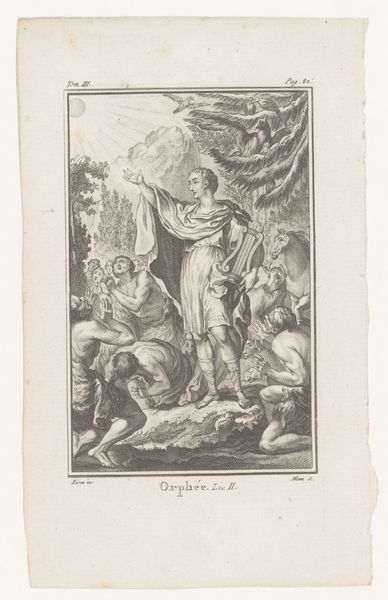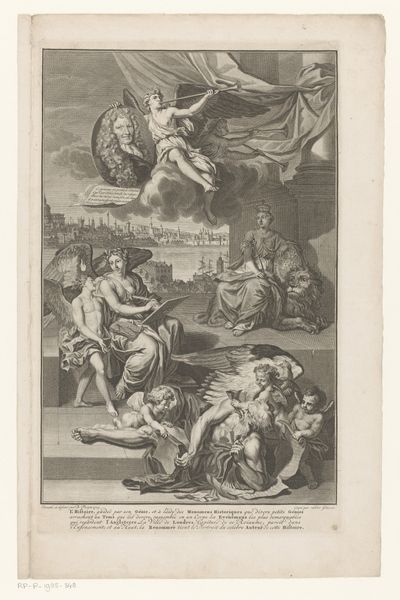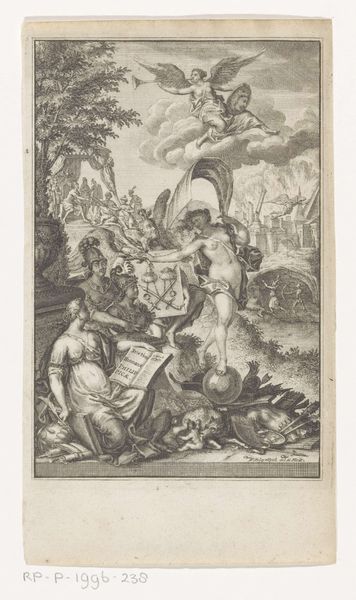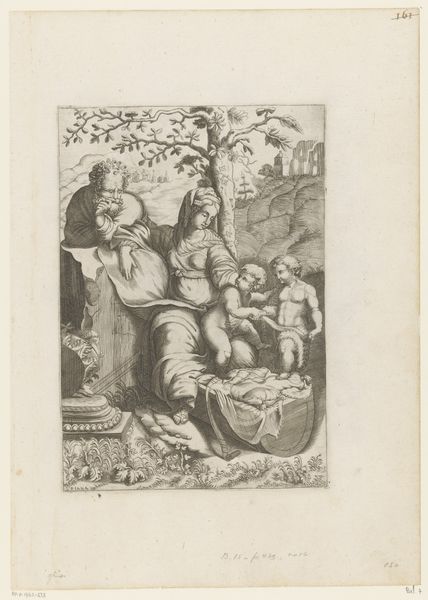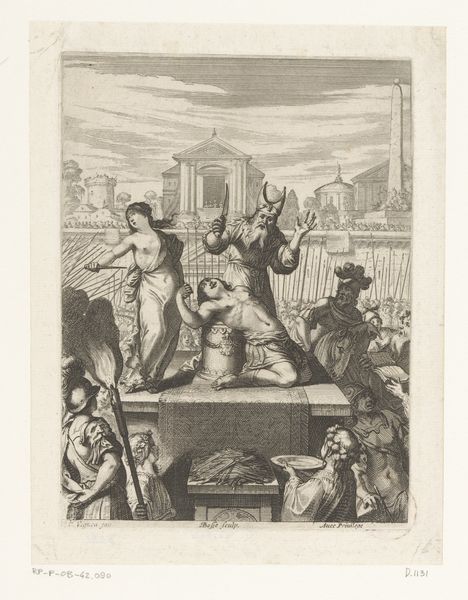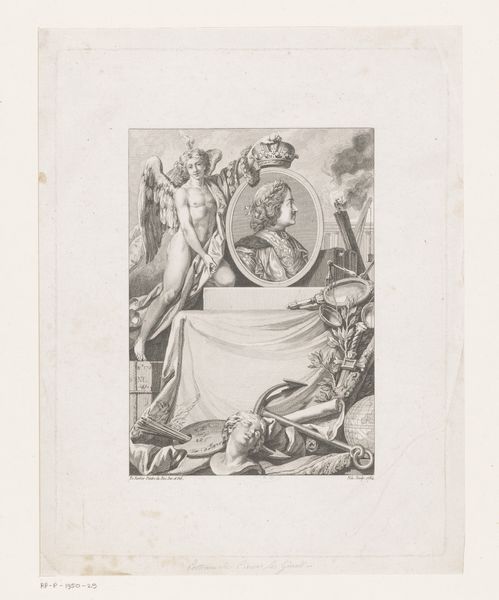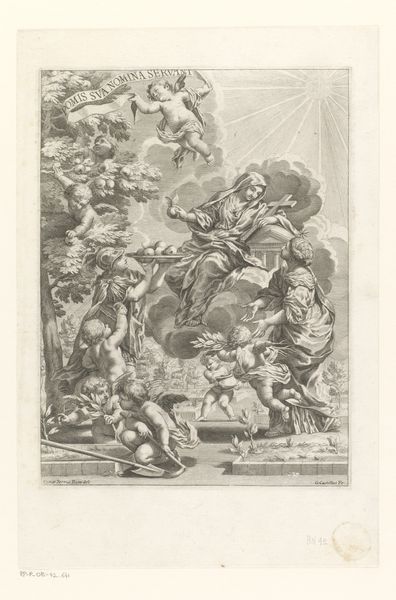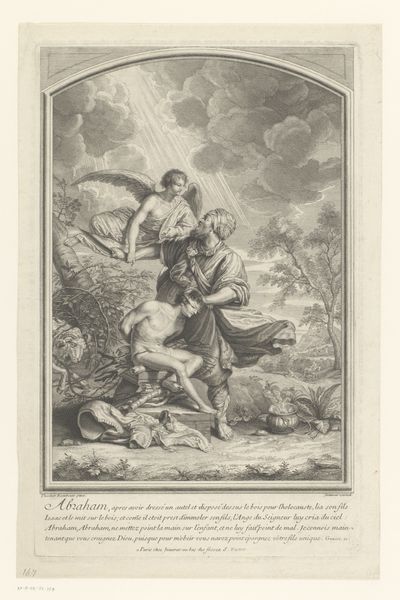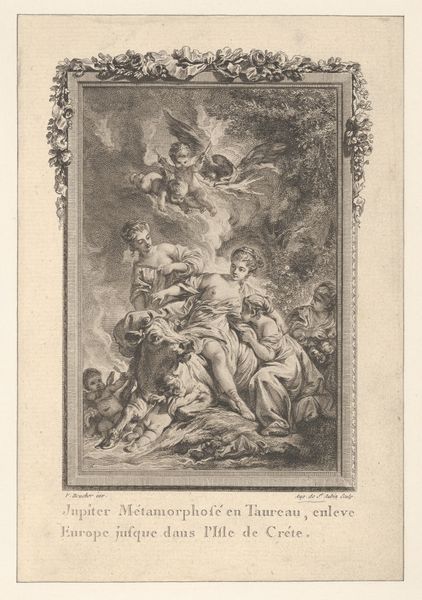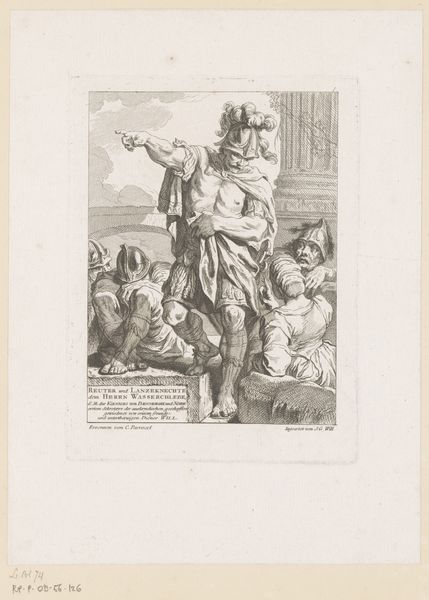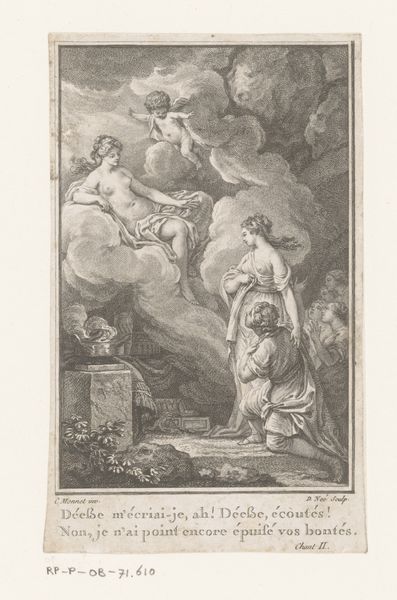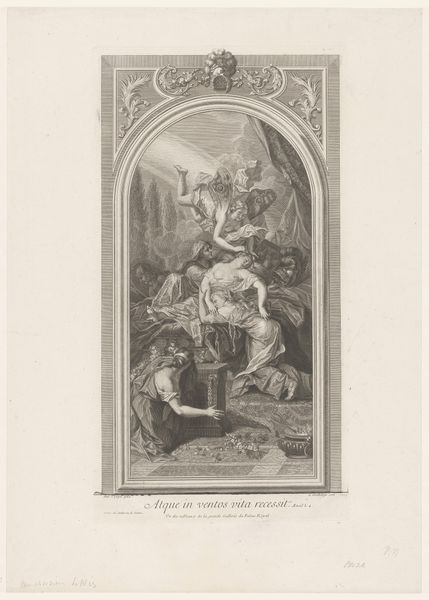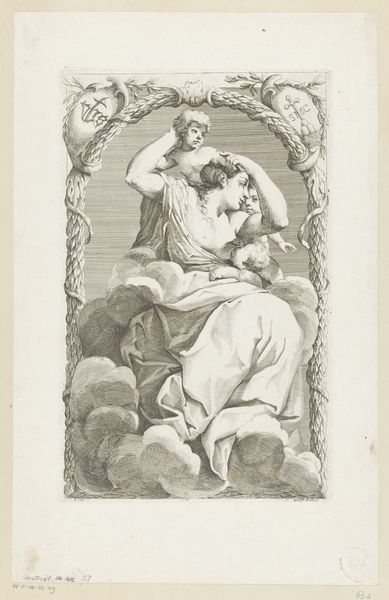
Minerva gezeten op een wolk met engelen en een portretmedaillon 1755
0:00
0:00
print, engraving
#
allegory
#
baroque
# print
#
old engraving style
#
figuration
#
line
#
history-painting
#
engraving
Dimensions: height 169 mm, width 98 mm
Copyright: Rijks Museum: Open Domain
Editor: This engraving from 1755, "Minerva gezeten op een wolk met engelen en een portretmedaillon" by Jacques Philippe Le Bas, depicts Minerva surrounded by clouds and cherubs. It strikes me as incredibly symbolic. I wonder how we can decode all of it. What's your take on this? Curator: This piece speaks volumes about the intersection of art, power, and knowledge in the 18th century. Notice how Minerva, the Roman goddess of wisdom, sits elevated, overseeing a portrait medallion. It's not just about idealized beauty, is it? It suggests a commissioning power, someone being legitimized by association with wisdom and divine favor. Who was this artwork created for, and how might its imagery have served their political or social agenda? Editor: So, you’re thinking it's less about pure artistic expression and more about projecting an image of authority? Curator: Exactly! Think about the baroque style, that excess of swirling clouds and angelic figures. It was favored by elites across Europe at this time, a visual language of power. Ask yourself: How would this print function within the larger political landscape of the time? Who was meant to see this image, and what impact was it intended to have on them? It definitely points to the importance of public image in 18th century society. Editor: That makes a lot of sense. I never thought about prints as playing such a key role in constructing someone's image and propagating ideologies. Curator: These visual images shaped the cultural understanding of events, persons, and sometimes, reinforced power structures. These works are key tools to analyze society. Now what can you tell me about what the text reads? Editor: The work includes the title of the book "Les Avantures de Telemaque". The frontispiece gives legitimacy to this novel! Curator: See! Editor: Well, this definitely gives me a new lens to analyze art's relationship to its historical context. Curator: Indeed. And to see how seemingly decorative pieces can hold much deeper social meaning.
Comments
No comments
Be the first to comment and join the conversation on the ultimate creative platform.
